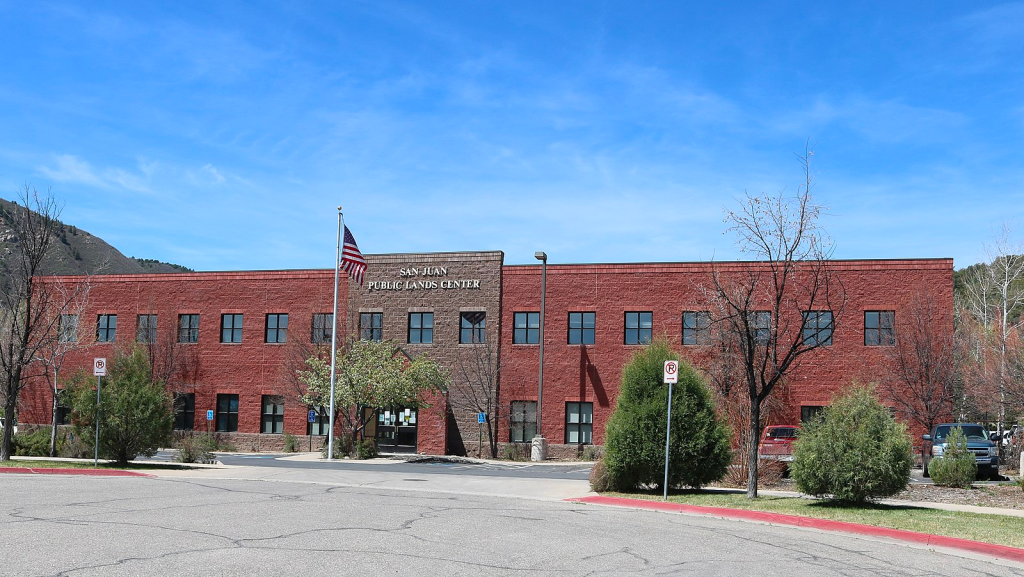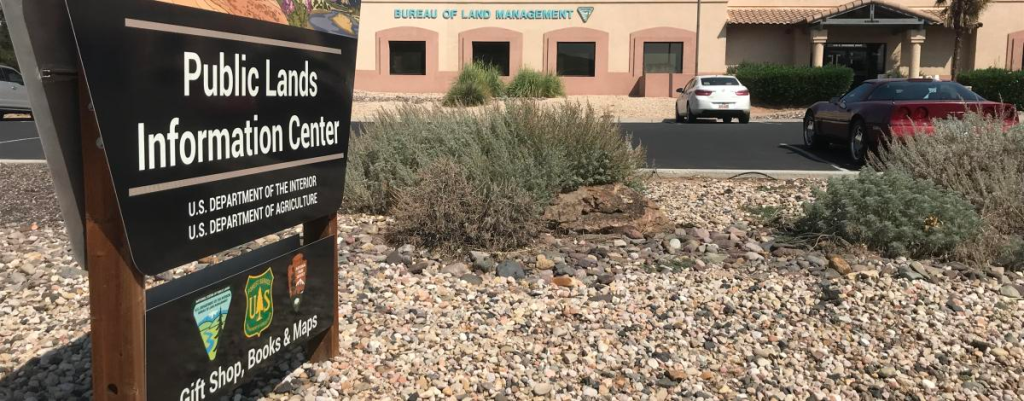One way to apply a human-centered approach to the delivery of public services is to create “one-stop shops” where people can find everything they need to solve a whole problem or complete an entire activity.

While government often runs according to internal organizational boundaries, those boundaries don’t always mean much to the people that government serves. They simply want to get information and complete processes regardless of which government or agency is responsible. If we take this perspective of a person who wants to do something, it can be incredibly helpful to have related services in one location.
One Stop for Permits and Information
Opened in 2011, the Houston Permitting Center brings together six city departments handling over 600 types of permits and licenses for construction, business operations, and more.
“The city’s goal was to create a user-friendly central permitting building,” notes the architecture firm behind the project. “All departments were to be housed in one building and for the first time, 90 percent of the permits necessary to do business in the city would be available under one roof.” This unified building has been combined with general process-improvement efforts.
Another example can be found at the federal level.
Four different agencies manage public lands like parks, forests, and wildlife refuges. These lands are often located in close proximity to each other, which can create complexity and confusion for people looking to use lands that cross agency boundaries.

Service First is an initiative to help these agencies work together more closely, sharing resources and delivering services jointly. In addition to its internal benefits for resource sharing and operational efficiency, Service First has opened up opportunities for the creation of joint offices and visitor centers, which can offer permits and visitor information.
For example, the San Juan Public Lands Center in Colorado — jointly operated by the U.S. Forest Service and the Bureau of Land Management — “has several cross-trained specialists to provide permitting and general assistance to members of the public who want to use public lands for multiple purposes, such as oil and gas development, recreation, or grazing.” This type of joint operation allows people to come to one site for all of their needs. The integration sometimes even goes down to the permit level; “recreation specialists issue one permit to recreationists according to which agency’s land will be used most.”

Considerations
While creating “one-stop shops” may sound great, it’s important to note that there are some complications, and they might not always be the right solution.
“A recent evaluation of one Service First location concluded that the implementation of Service First has been positive for customer service, one-stop shopping, and resource management,” noted a report — but this evaluation “also concluded, however, that barriers to meeting Service First objectives still exist, including differences in administration, information technology, and budget.”
Integrating functions at the individual employee level also has its pros and cons. It can be great for the public, but it also poses challenges for the staff. “Employees interviewed as part of the evaluation said they believed that the increased workload associated with the initiative was inadequately recognized. Specifically, employees explained that following two sets of rules takes more time and funding, and Service First efforts require more communication on everyone’s part,” the report said.

It all comes down to weighing the costs and benefits. The report on federal land management advises that “some arenas may not lend themselves to collaboration. For example, integrating offices and programs may not make sense where the agencies’ roles and responsibilities differ dramatically or where managed lands are not contiguous.”
Opportunities Abound
Still, joint “one-stop shops” offer a lot of promise for helping people address most of their needs related to a specific situation, and it’s worth considering if your government has any examples of how this might improve service delivery. Some subject areas to consider include permitting and licensing, health and human services, and public lands — but the opportunities are endless.
Though bureaucratically challenging, one particular “one-stop shop” opportunity is bringing together agencies from multiple levels of government. This is especially true if colocation is accompanied by increased communication between these separate staffs.
There are often perfectly good reasons that “doing one thing” from the perspective of the average person involves going through multiple departments or levels of government, but we should still try to do everything that we can to ease the process. Offering multiple related services at a single location is one way to help.
Greg is the Associate Director for Human-Centered Government at Code for America, where he is leading efforts to support public servants with resources and training on the organization’s principles and practices for how government can and should serve the public in the digital age.





Leave a Reply
You must be logged in to post a comment.